Affiliate disclosure: This post may contain affiliate links. Please see our Privacy Policy.
Lungwort (Pulmonaria officinalis) is a medicinal herb whose use goes back millennia. It also happens to be an edible wild green as well.
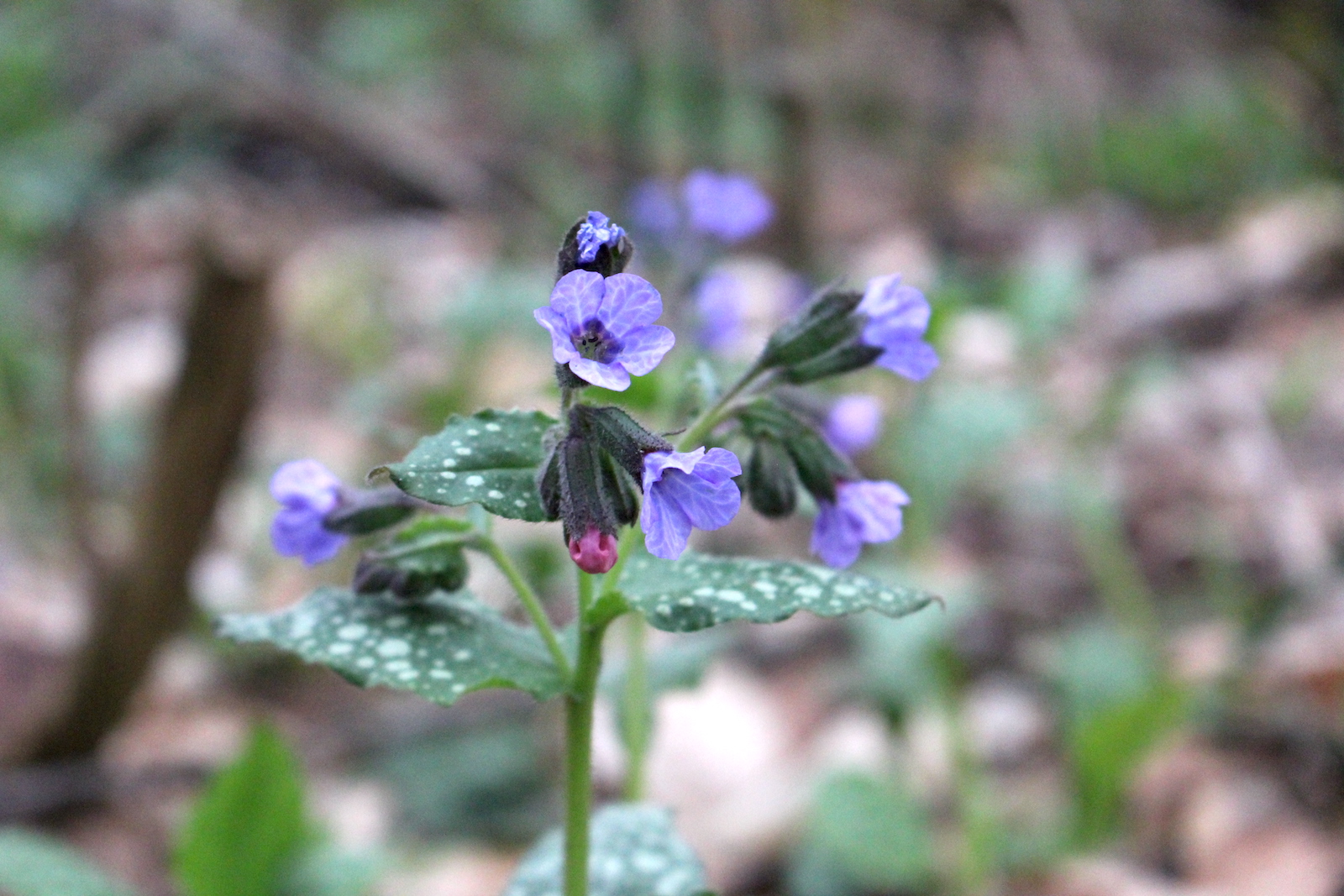
Many years ago, my first herbal mentor showed me lungwort to explain the doctrine of signatures. Back in the middle ages, herbalists believed that you could tell the medicinal properties of a plant-based on things like a leaf’s shape.
At that point, most of the herbal writers were monks, and it was commonly thought that God made plants for human use alone, and their appearance was a gift to humans to help them decode his methods.
In reality, the doctrine of signatures didn’t work out all that well, and just because a flower is heart-shaped doesn’t mean it’s going to cure heart disease.
In the case of Lungwort, however, they got lucky, and these little lung-shaped leaves really are a wonderful respiratory tonic.
Lungwort is a common wild green that is available in April and May most years, depending on where you live. It’s also a common garden flower, and there’s a good change it’s growing in a shady patch somewhere in your grandmother’s garden.
Even if she didn’t plant it on purpose, it readily self-seeds, and these beautiful flowers (and attractive leaves) are usually welcome in even the fussiest formal garden. The bees love it too!
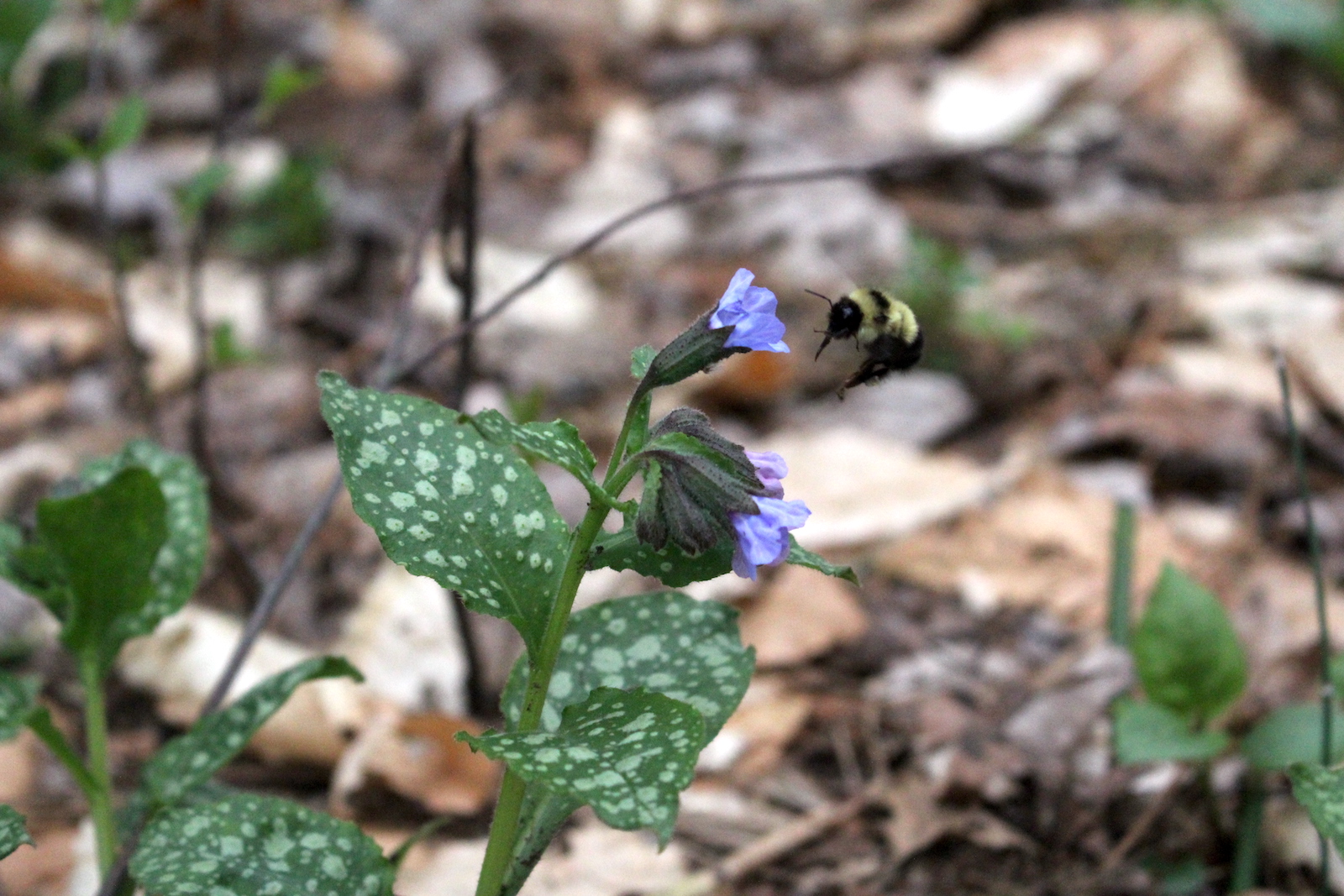
What is Lungwort?
Lungworts, or the Pulmonaria genus, are a group of evergreen, herbaceous perennials in the Borage or Boraginaceae family. There are estimated to be about 18 species of Lungwort which are native to Europe and Asia. Some species have naturalized in localized parts of North America where they have escaped cultivation.
One of the most common species is Pulmonaria officinalis which is sometimes called Mary’s Tears, Our Lady’s Milk Drops, Common Lungwort, or just Lungwort. Three species of Lungwort, Pulmonaria saccharata, P. angustifolia, and P. longifolia, are commonly cultivated as ornamentals.
Is Lungwort Edible?
Lungwort leaves, and flowers are edible and can be eaten raw or cooked. However, many find that Lungwort has a mildly unpleasant taste, so it may be best mixed with other greens or cooked in a recipe.
Most foragers gather Lungwort not for its palatability but for its medicinal properties and high mucilage content. Herbalists often prepare Lungwort as a tea or use it as an ingredient in homemade cough syrups. Additionally, Lungwort can be applied externally as a poultice.
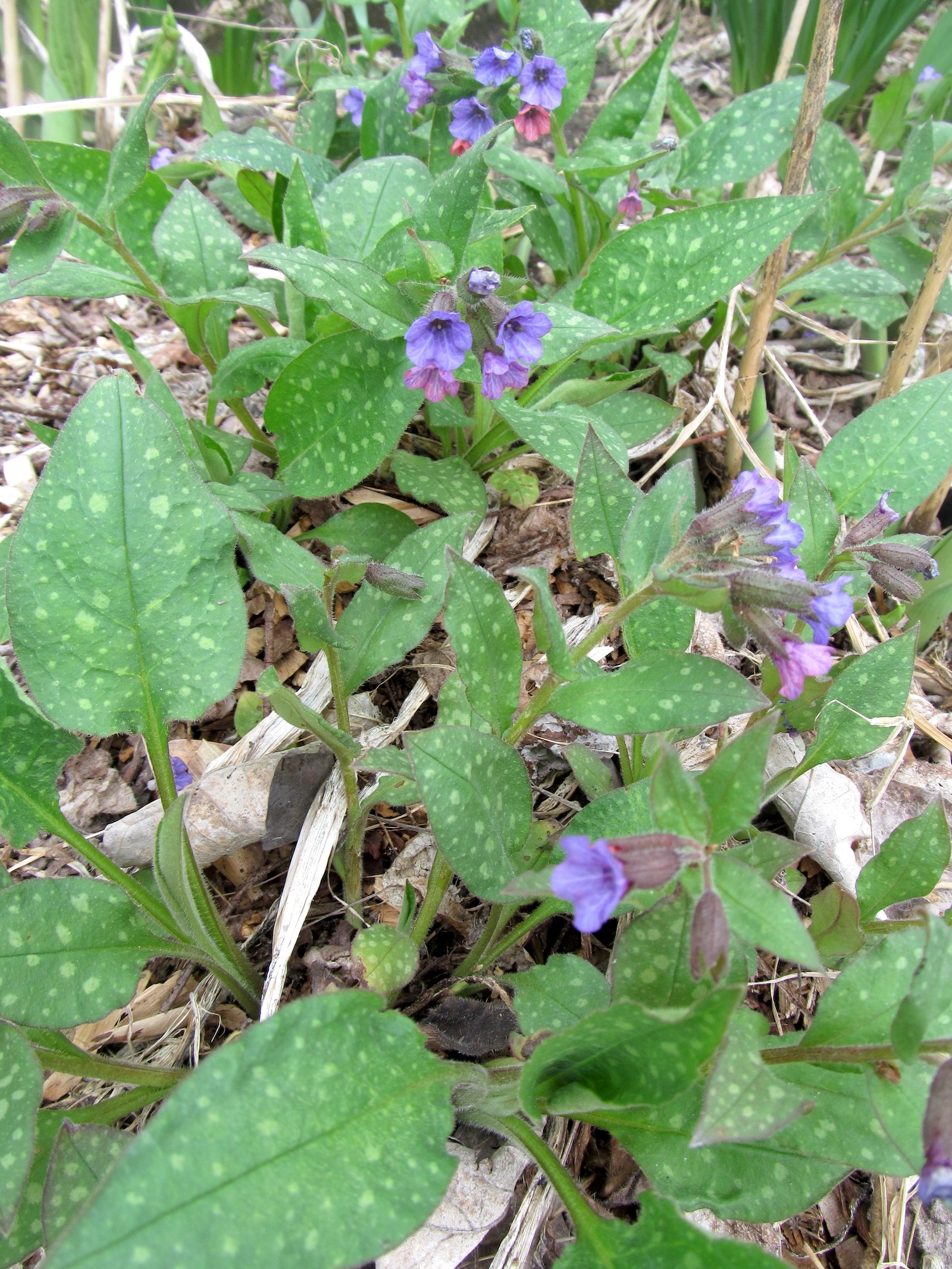
Lungwort Medicinal Benefits
Lungworts have a long history in herbal medicine, as is indicated by their common and Latin names. The Latin name Pulmonaria comes from the Latin pulmo meaning lung.
Leonhart Fuchs, a German physician and one of the three founding fathers of botany, bestowed the name upon the plant because of the Doctrine of Signatures. This doctrine held that plants that resembled body parts could be used to treat ailments in that body part. The plants’ spotted leaves were thought to resemble damaged lungs and were widely used in the Middle Ages to treat coughs and other chest ailments.
Today, the Lungwort has largely fallen out of popular usage. Herbalists that incorporate the plant into their practices typically employ Lungwort in internal preparations to treat stomach and intestinal issues, breathing ailments, coughs, colds, and kidney and urinary tract issues.
Practitioners may also use it externally, often to treat minor wounds or irritations. Lungwort is astringent and is believed to have a drying effect on some skin issues. The mucilage in the leaves may also help to soothe irritations.
Despite their prominent use in traditional medicine, Lungworts have remained largely unexamined by modern researchers. One study found that many of their biological properties may make them good candidates for use against chronic or infectious disease but noted that “[additional] studies are recommended to corroborate the antioxidant, anticoagulant, anti-anticonvulsant, and wound-healing properties of lungworts.”
A 2018 study also explored the antioxidant content of Common Lungwort (Pulmonaria officinalis) and found that it could provide a natural source of antioxidants. A separate study examing Bulgarian medicinal plants also confirmed Lungwort’s high antioxidant content.
Hopefully, modern scientists will continue to examine this potentially powerful herb in the future.
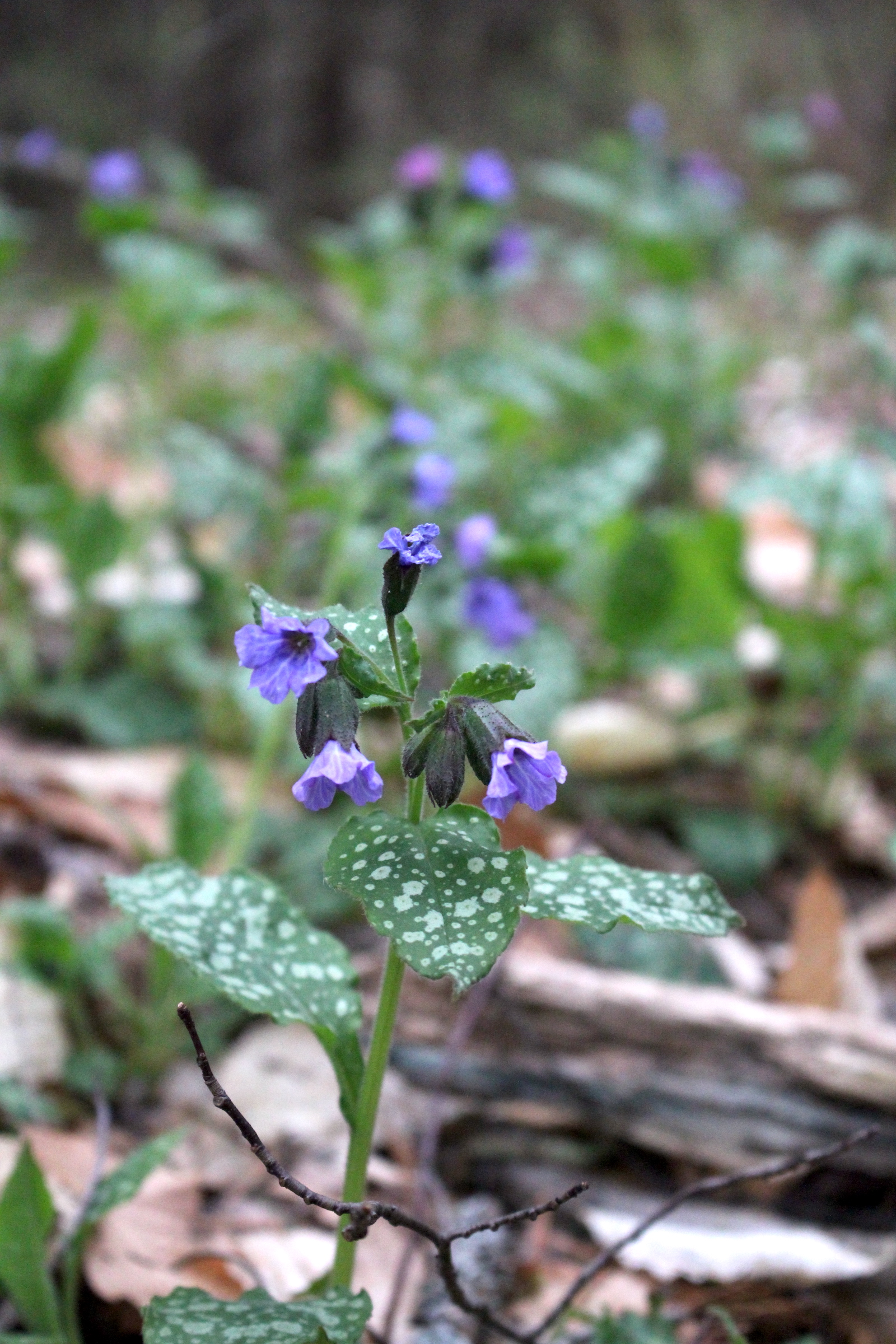
Where to Find Lungwort
Lungwort is native to Europe and parts of Asia. Though it isn’t typically considered an aggressive invasive, it has naturalized in some other areas, including parts of North America. Additionally, it’s commonly grown as an ornamental or as part of pollinator plantings worldwide.
Lungwort does best in partial to full shade and is often an understory species. You may spot Lungwort growing in deciduous and mixed forests in lowland or mountainous areas. It may also grow in moist grasslands and damp hedgerows.
It thrives in areas with moist, rich, well-drained soil but won’t tolerate hot and dry or soggy soils. Lungwort does best in calcareous, clay-loam, and rocky soils and doesn’t tolerate acidic soils.
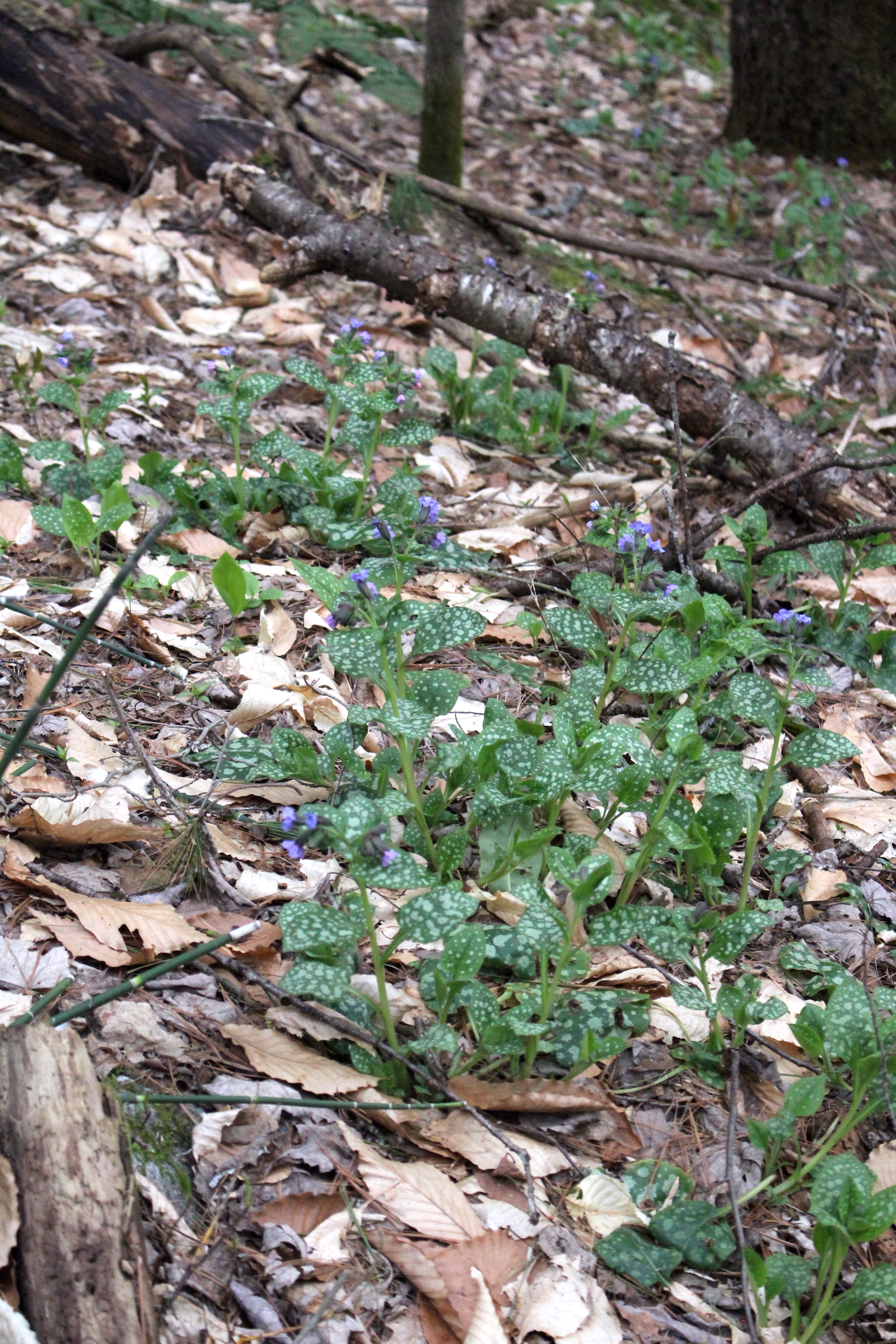
When to Find Lungwort
Lungwort is considered an evergreen and often retains its low-growing basal rosette of leaves through the winter, though it may die back some in the winter in colder climates. In warmer climates, you may be able to harvest the leaves year-round.
In early spring, before the trees have leafed out, Lungwort puts on new growth and sends up flower stalks. This is generally the best time to harvest. While the foliage will remain at least through the summer, the flowers come and go quickly.
Identifying Lungwort
Lungwort is a low-growing plant with fuzzy speckled leaves. It’s easiest to spot in spring as it blooms when few other plants are even up. The flowers begin as pink, mature to a rose violet, and then blue. Many times, all three colors will be present on one plant and are a good indicator that you have the right species.
Lungwort may reach up to 12 inches tall and 2 feet wide. It spreads by slowly creeping underground rhizomes and forms patches of plants.
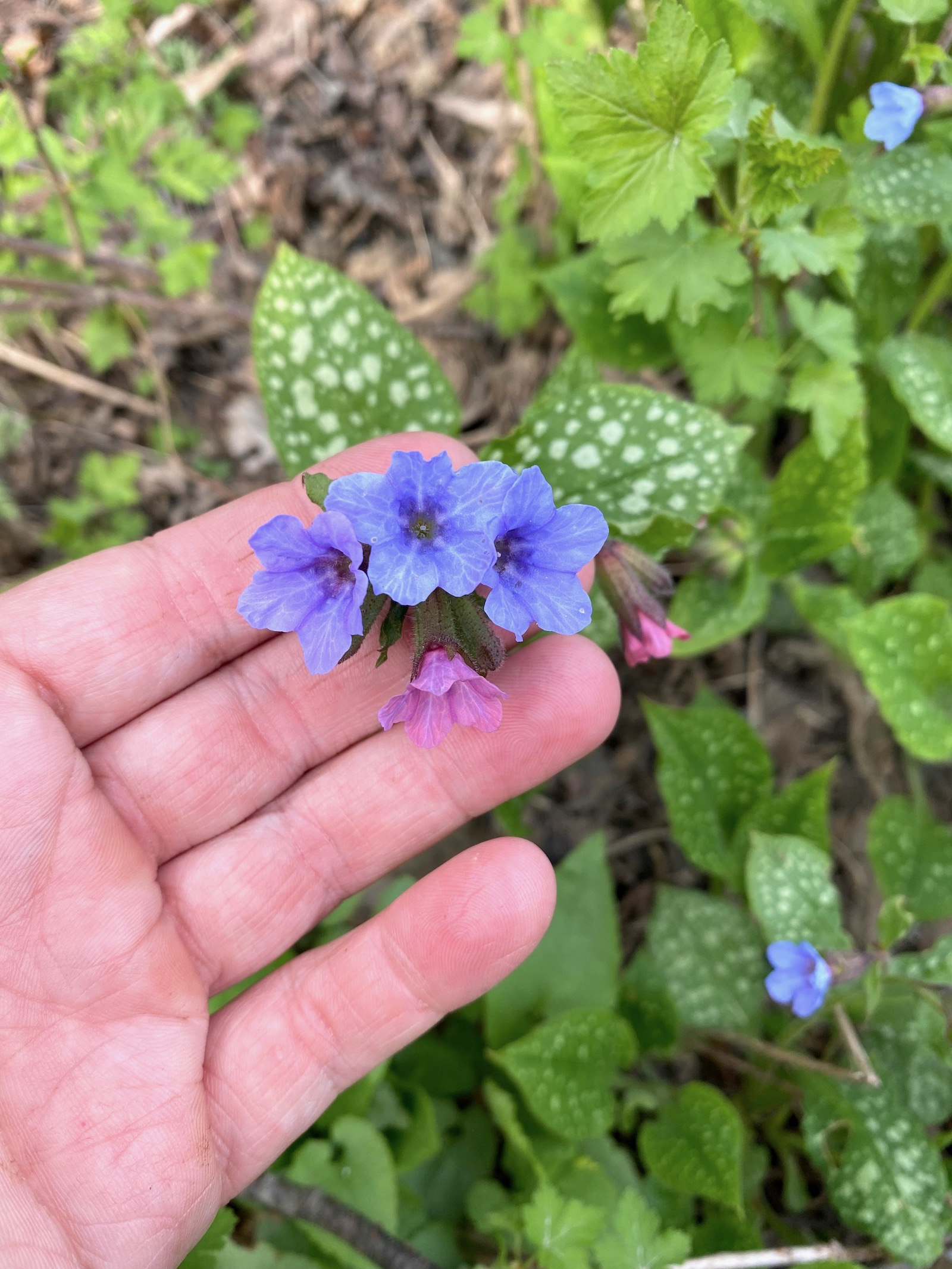
Lungwort Leaves
Lungwort leaves form a basal rosette at the base of the plant. Typically, the leaves of the basal rosette are lanceolate to oval and are petioled (have stems). They may have heart-shaped or gradually narrowing bases and blunt or pointed tips. Typically they are between 3 and 5 inches long.
Lungwort also forms a few leaves on the flower stem. These leaves are generally shorter and lack petioles, clasping directly on the stem.
The leaves are covered in rough-feeling hairs. In most species, including Common Lungwort (Pulmonaria officinalis), the leaves feature prominent spots in blue, black, pale green, or whitish.
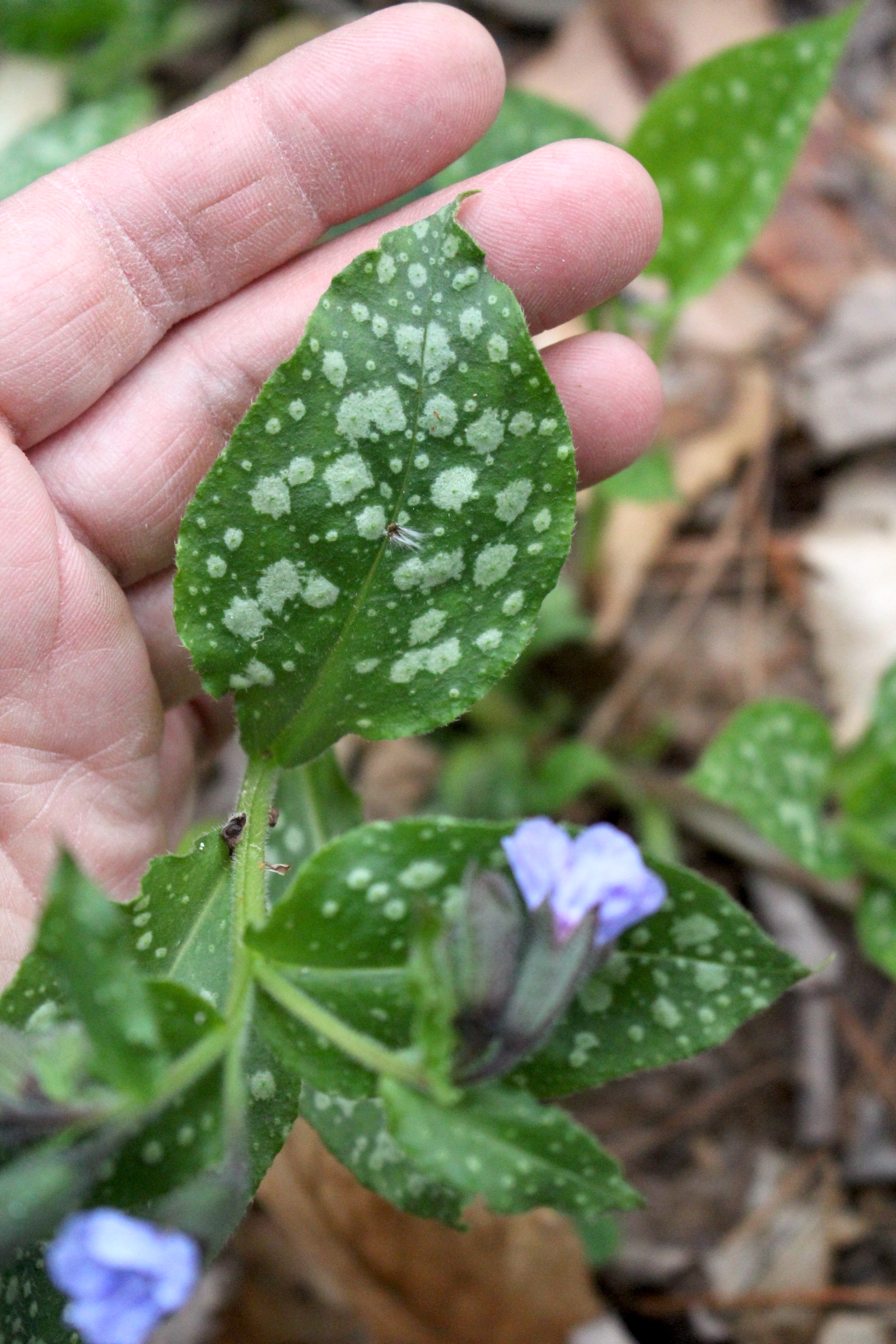
Lungwort Stems
In early spring, Lungwort sends up sparsely leaved, round flower stems, which typically reach 6 to 12 inches tall.
The stems are generally green but may have a reddish tinge. Like the leaves, they are covered with rough hairs.
The stems fork at the top where the flowers are located.
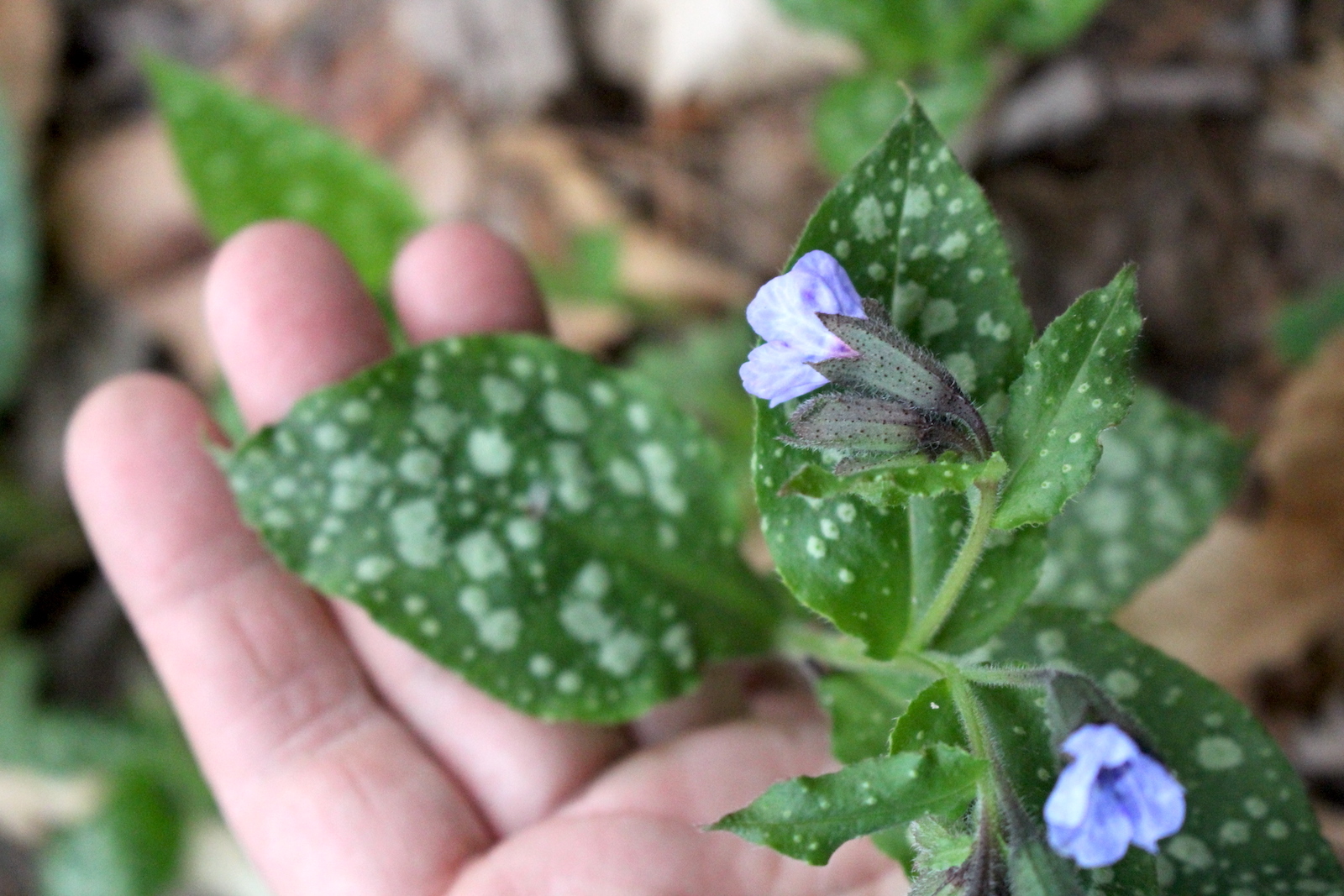
Lungwort Flowers
Lungwort flowers are bell or funnel-shaped with five petals and about ¾ inches long. They form on forked clusters at the top of the flower stem in the spring.
The interesting flowers of this species emerge pink before maturing to rose violet and then finally blue. You may spot pink and blue flowers on one plant.
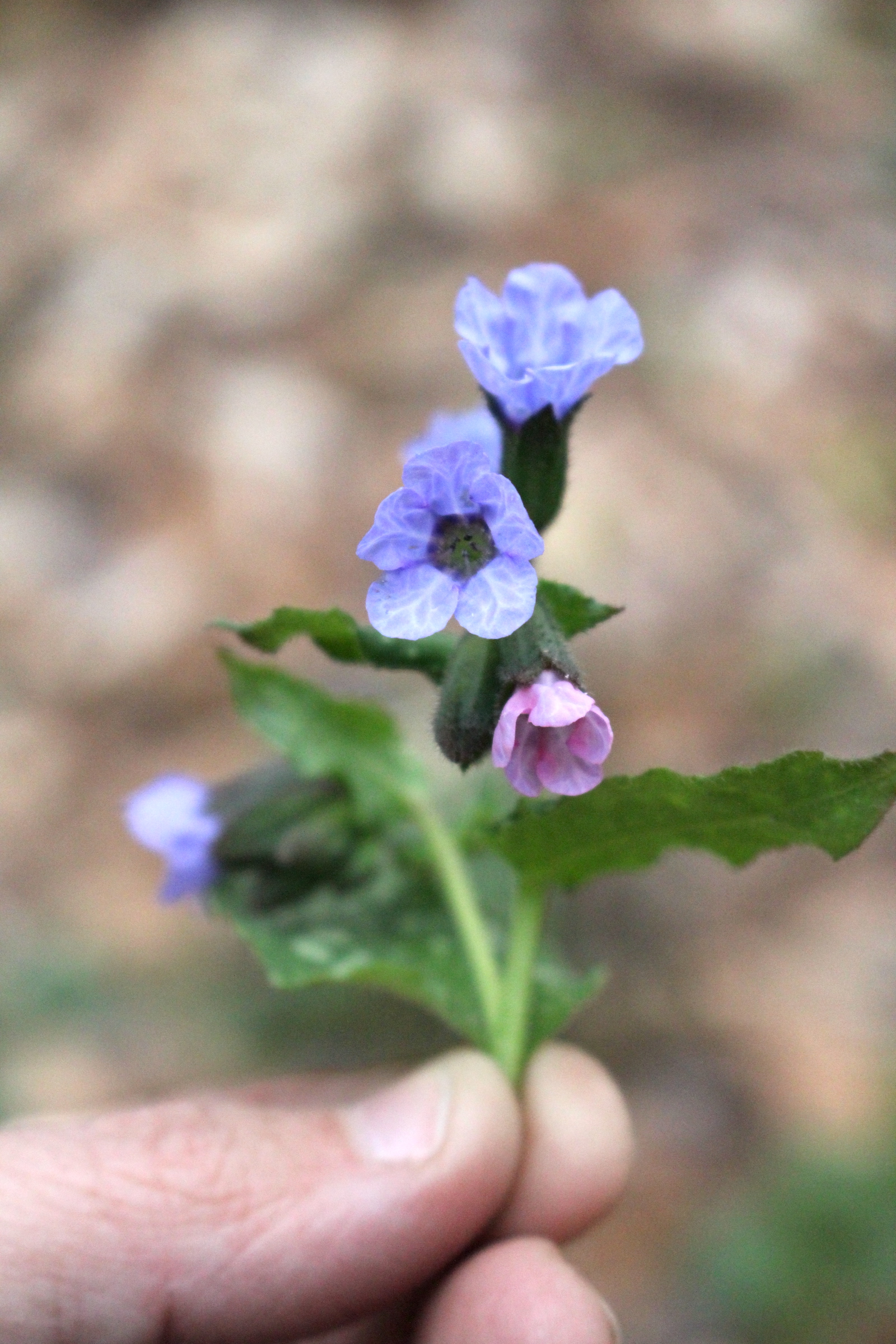
Lungwort Look-Alikes
Lungwort can be confused with the closely related, Borage (Borago officinalis). However, there are a few features that make it easy to distinguish.
- Borage has blue, star-shaped flowers with triangular petals and prominent black anthers.
- Borage may reach over 3 feet in height.
- Borage leaves are broadly ovate, solid colored, and alternately arranged.
- Borage leaves are generally 1.5 to 4 inches in length.
Lungwort is also sometimes mistaken for Common Comfrey (Symphytum officinale), another member of the Borage or Boraginaceae family. Thankfully, it can also be distinguished in a few simple ways:
- Comfrey has drooping bell-shaped flowers that are either white, pink, or lavender.
- Comfrey leaves are solid green and large, reaching 3 to 6 inches wide and more than 6 inches long.
- Comfrey leaves along the stem have margins that extend down the stem.
- Comfrey is an erect branching perennial that can reach up to 42 inches tall.
- Comfrey has large, black taproots.
Ways to Use Lungwort
Lungwort has largely fallen out of modern usage, but it can still be a fun plant to work with. In the kitchen, lean on lungwort for the mucilage in its leaves which can be used similarly to okra to help thicken soups, stews, and other dishes. You can also try incorporating a few of the leaves and flowers in spring salads.
You can also experiment with Lungwort’s medicinal properties. Externally, Lungwort can be made into a quick poultice for soothing minor wounds and irritations. It’s astringent, and the mucilage from its crushed leaves may have a soothing effect.
Internally, Lungwort may be helpful in treating intestinal, kidney, and urinary issues but is primarily used for lung-related ailments. You can incorporate Lungwort leaves and flowers in essences, teas, tinctures, and cough syrups to help treat various ailments, including colds, flu, sore throats, coughs, and other minor breathing problems.
Lungwort leaves, and flowers can both be dried while in season for later use in recipes like soups or herbal preparations like teas and tinctures.
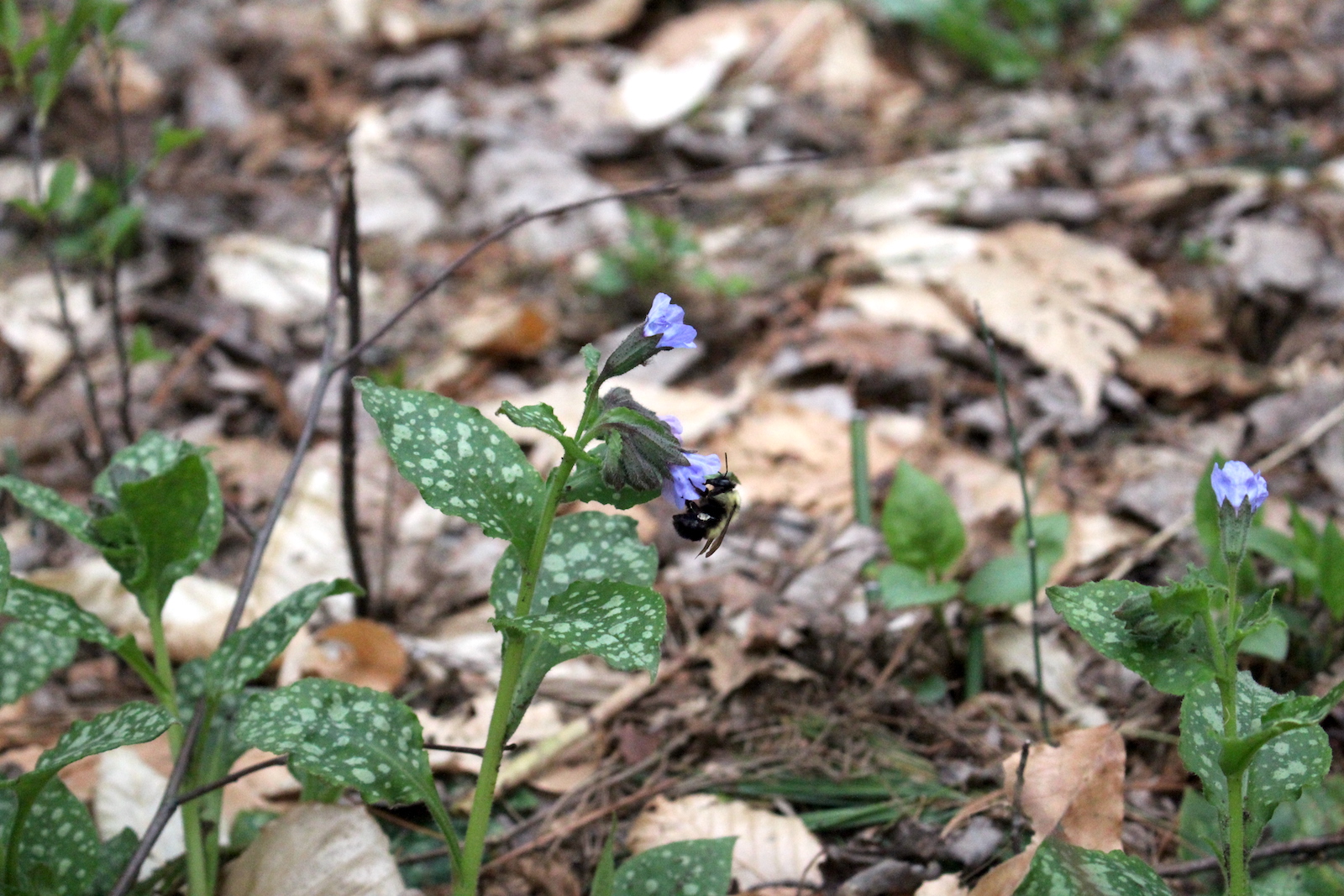
Lungwort Recipes
If you’d like to add Lungwort to your herbal practice, try this simple Lungwort Tea or Lungwort Wine from Healthy Hildegard for colds, cases of flu, bronchitis, pulmonary edema, or other lung inflammation.
Try this Lungwort Tincture or Lungwort Flower Essence recipe from The Alchemist’s Kitchen to preserve some Lungwort for future medicinal use.
If you find a good patch of Lungwort and are looking for tasty ways to put it to good use, try these recipes for Lungwort Leaf Gumbo or Egg Salad with Lungwort from the Backyard Patch Herbal Blog.
Edible Wild Weeds
Looking for other edible wild weeds?
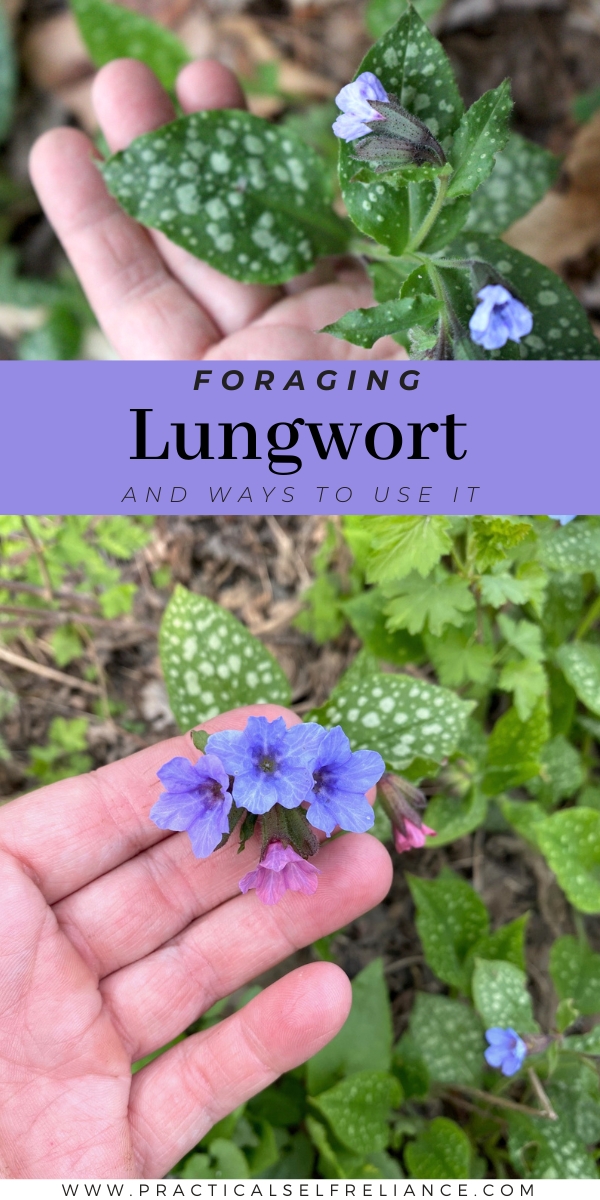

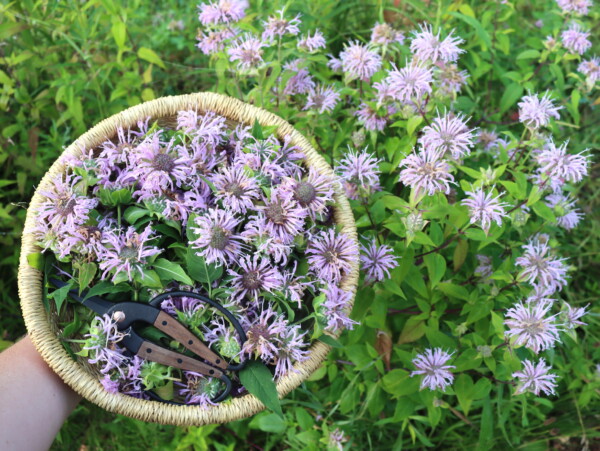
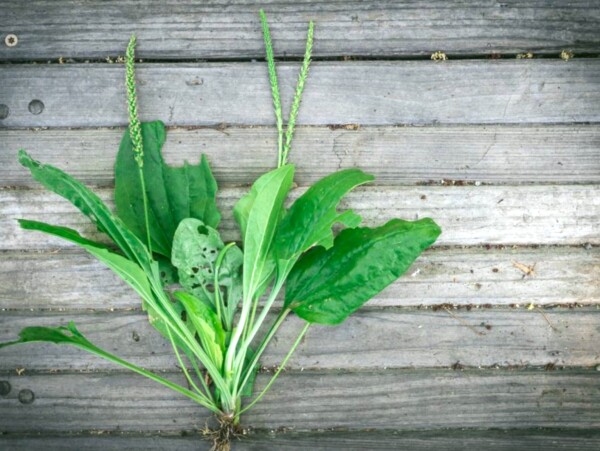
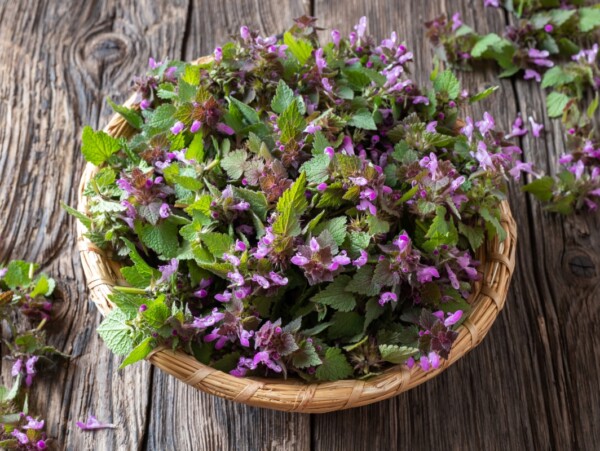
Hello, the information you have posted is interesting, therefore, I would like to subscribe, however, before I do I wanted to confirm that my email address would remain private without being shared or sold, Thank you for confirming.
We do not share or sell email addresses.